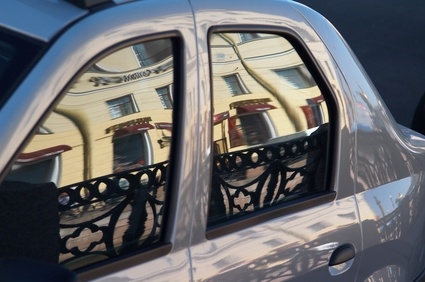
Window motors on vehicles frequently fail as they age, resulting in seized and malfunctioning electric windows. In some cases, this is an electric circuit problem, but most of the time, the motor itself fails due to normal wear and tear. Because of the cost involved with labor and diagnostics, testing a window motor yourself saves money and requires only a few basic tools and some time.
Disconnect the car's battery cables, starting with the negative cable first, then the positive. This prevents you from accidentally shorting out electrical components if wires or connections come in contact with each other at any time.
Remove the screws holding the door paneling on the door in which the motor is contained.This will vary among vehicles, but will typically require only a flathead and Phillips-head screwdriver. You may also have to remove the window control switch panel, depending on the vehicle, but can be done with the same tools.
Remove the motor from the window regulator rail. This is the assembly which helps the window slide up and down. This will require the use of a socket set and typically involves the removal of several bolts holding the motor to the window regulator assembly. This protects the window from stress during motor testing.
Unplug the wire connectors attached to the window motor. These connections will typically be male and female connectors which simply pull away from each other, but occasionally the wires are screwed into the motor itself or use a simple clip which can be easily separated. At this point, the motor should be completely unattached from the door.
Connect the positive terminals of the jumper wires to the positive terminal on the 12-volt battery and to one connector on the motor. Using jumper wires with alligator clips is one of the easiest ways to connect the wires to the motor. It does not matter which connector on the motor the positive end of the jumper wire is placed on, since the motor is designed to operate in both directions and thus uses two different current directions.
Connect one negative end of the jumper wire to the negative terminal on the 12-volt battery. The other negative end may be placed on the remaining connector on the window motor. If the motor turns over freely at constant speed, then it's working properly. If the motor does not spin at all, or does so sporadically, it must be replaced.